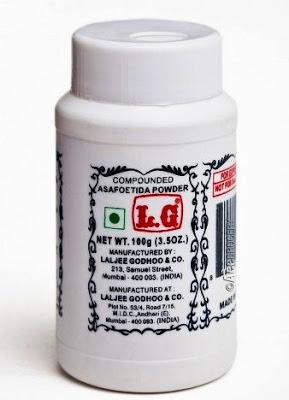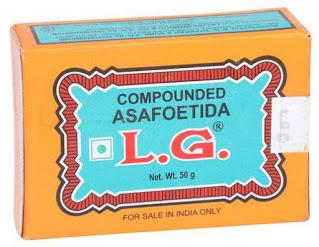In game, losses do happen .. ..yet fans find it so difficult to accept that CSK too could crash out of IPL and are so angry ! நண்பர் ஒருவர் கோவத்தில் உதித்த பதிவு .. 'இவர்கள் பழைய பெருங்காய டப்பா'

Ferula (from Latin ferula, 'rod') is a genus of about 170 species of flowering plants in the family Apiaceae, native to the Mediterranean region east to central Asia, mostly growing in arid climates. They are herbaceous perennial plants growing to 1–4 m tall, with stout, hollow, somewhat succulent stems. The leaves are tripinnate or even more finely divided, with a stout basal sheath clasping the stem. The flowers are usually yellow, rarely white, produced in large umbels. .. .. and we use its product every day – remember your sweet-smelling Pongal, sambar, rasam, pickles and various condiments ! .. .. can you connect, what ? .. more – we buy this commodity certainly everymonth in our households – may be 100 gms could cost close to Rs.1000 depending on the quality and brand !
Not the plant but this spice is used as a digestive aid, in food as a condiment, and in pickling. It plays a critical flavoring role in Indian vegetarian cuisine by acting as a savory enhancer. Used along with turmeric, it is a standard component of lentil curries, such as dal, chickpea curries, and vegetable dishes, especially those based on potato and cauliflower. Asafoetida (பெருங்காயம்) is used in vegetarian Indian especially South Indian cuisine where it enhances the flavor of numerous dishes, where it is quickly heated in hot oil before sprinkling on the food. It is sometimes used to harmonise sweet, sour, salty, and spicy components in food. The spice is added to the food at the time of tempering. Sometimes dried and ground asafoetida (in small quantities) can be mixed with salt and eaten with raw salad.
In its pure form, it is sold in the form of chunks of resin, small quantities of which are scraped off for use. The odor of the pure resin is so strong that the pungent smell can impact other spices stored nearby if it is not stored in an airtight container.
வெத்து வேட்டாய் தோற்று பயனில்லாதவர்களை - `காலிப் பெருங்காய டப்பா’ என சொல்ல கேட்டிருப்போம். அதாவது ஒரு காலத்தில் சிறப்பாய் இருந்து, இன்று பலராலும் ஏளனப்படுத்தப்படுவது ! பெருங்காயம் சாதாரணமானது அல்ல. சமையலுக்கு மணமூட்டும். அரிய மருத்துப்பலன்களை கொண்டதாக கருதப்படுகிறது. . பெருங்காயத்தின் மணத்தை முகர்ந்து முகம் சுளித்த அமெரிக்கர்கள், ஒரு காலத்தில் அதை ஏளனப்படுத்தினார்களாம். இப்போது உலகத்தை நம்மைப் பயமுறுத்திவரும் கொரோனா போல, சென்ற நூற்றாண்டில் ஸ்பானிஷ் ஃப்ளூ (Spanish Flu) பல்லாயிரம் பேரைக் கொன்று குவித்த போது பெருங்காயம் மருந்தாக பயன்பட்டதாம்.
The English name is derived from asa, a latinised form of Persian azā, meaning "resin", and Latin foetidus meaning "smelling, fetid", which refers to its strong sulfurous odour. It is called perunkayam (பெருங்காயம்) in Tamil, hinga (हिंग) in Marathi, hengu (ହେଙ୍ଗୁ) in Odia, hiṅ (হিং) in Bengali, ingu (ಇಂಗು) in Kannada, kāyaṃ (കായം) in Malayalam (it was attested as raamadom in the 14th century), inguva (ఇంగువ) in Telugu, and hīng (हींग) in Hindi. Its pungent odour has resulted in its being known by some unpleasant names too. In English it is sometimes called Devil's dung, and equivalent names can be found in most Germanic languages .
Asafoetida is the dried latex (gum oleoresin) exuded from the rhizome or tap root of several species of Ferula (F. foetida and F. assa-foetida). They are part of the celery family, Umbelliferae. Notably, asafoetida is thought to be in the same genus as silphium, a North African plant now believed to be extinct, and was used as a cheaper substitute for that historically important herb from classical antiquity. The species are native to the deserts of Iran and mountains of Afghanistan where substantial amounts are grown. Asafoetida was familiar in the early Mediterranean, having come by land across Iran. It entered Europe from an expedition of Alexander the Great, who, after returning from a trip to northeastern ancient Persia, thought they had found a plant almost identical to the famed silphium of Cyrene in North Africa—though less tasty. After the Roman Empire fell, until the 16th century, asafoetida was rare in Europe, and if ever encountered, it was viewed as a medicine.
Hing or asafoetida is a key part of the cuisine in many parts of India, but so far, it has had to be imported from countries like Afghanistan, Iran and Uzbekistan, because it was never grown locally. (news to me – all along I thought it comes from southern village !!) But now, scientists from the Centre for Scientific and Industrial Research (CSIR) have planted hing saplings in Himachal Pradesh, in the hope that cultivation of the spice will become a common practice in India.
Even though India consumes 40 per cent of the world’s hing, no attempt had been made to start its cultivation locally. However, since 2016, Sanjay Kumar, director of CSIR-Institute of Himalayan Bioresource Technology (IHBT) in Palampur, has been working on growing asafoetida locally. “India imports nearly 1,200 tonnes of ferula asafoetida, amounting to nearly US $130 million every year,” Kumar told The Print. “That is a huge amount to pay for just one spice.” Moreover, there have been many times when war and strife has prevented Iran and Afghanistan from exporting hing. “Hing from Kabul has become part of the tradition, no one thought about cultivating it in India. Several people in India claim that we do have ferula species in India — but those are not the real varieties. In the last 30 years, no one has imported hing seeds into this country,” Kumar said.
Himachal’s Lahaul and Spiti district is also a cold desert with climate similar to Afghanistan, making it ideal for hing cultivation. The CSIR team has started the project on about 500 hectares of land, but it will take four to five years before the homegrown hing achieves the same quality as what is imported from Iran or Afghanistan. If the pilot is successful, the scientists want to expand the cultivation to Ladakh, parts of Uttarakhand and Arunachal Pradesh. Kumar and his fellow scientists are working closely with government officials of Himachal Pradesh to train the local farmers about the correct way to cultivate the spice.
“There is no scientific literature available on how to grow asafoetida. So, we developed the agrotechnology of this plant — we know precisely how this plant is germinated, and how it should be transplanted. We conducted training programmes for the farmers and state officials,” Sanjay Kumar said. He explained that the plant can only be seen above the surface for one or two months, after which it gets buried under snowfall, and goes into a state of hibernation. “At this point, from past experience with other types of cultivation, we know that farmers are likely to become impatient. They might start digging to check, but once the plant gets disturbed, the quality of the hing will not be good. We have to make sure farmers understand this,” he said.
Apart from this, farmers are also being trained on how to irrigate the plant, which mostly survives on the moisture from melting snow. Farmers are also being discouraged from using chemical fertilisers, and being asked to only work with animal dung. Using funds provided by the state government to the tune of Rs 4 crore, IHBT has set up a tissue culture lab that can quickly grow lakhs of saplings. This way, eventually, India will not even need to import asafoetida seeds from other countries, Kumar said.

Laljee Godhoo & Co. opened its doors to the Southern Markets by establishing its First branch in Nagapattnam (currently non-operational), followed by Kumbakonam and then Chennai. The years 1976-1978 brought about some crucial changes for the company. With the evolution of a busier lifestyle where women had no time to dry and grind the lumps to get the perfect powdered texture, we wished to provide our customers with just the right product which would provide the same taste without effort or delay. With the introduction of Compounded Asafoetida in Powder Form in 1978 and with this, LG also introduced the 50gm bottle of Compounded Asafoetida which is seen in almost every household today.
Interesting !
With regards – S. Sampathkumar21.10.2020.

